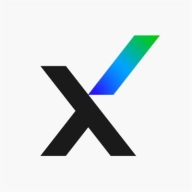

Splunk Enterprise Security and Trellix Helix Connect are prominent in the cybersecurity domain. Splunk is recognized for its extensive analytics, making it preferable for larger enterprises, while Trellix's appeal lies in its AI capabilities, affordability, and rapid deployment.
Features: Splunk Enterprise Security provides advanced threat detection, robust data analysis, and support for multi-cloud environments. It offers customization through plugins and boasts extensive integration capabilities. Trellix Helix Connect focuses on AI-driven automation, seamless integration with more than 400 connectors, and quick deployment, enhancing its incident response mechanisms.
Room for Improvement: Splunk needs to improve user management, streamline its dashboards, and enhance integration with VMware. Better training materials would also benefit its users. Trellix should aim to reduce false positives, bolster third-party tool integration, and strengthen tenant session management. Both could improve user interfaces and documentation to offer a smoother user experience.
Ease of Deployment and Customer Service: Splunk offers diverse deployment options including on-premises and cloud models, but it can be complex and resource-intensive. Although reliable, its customer support can sometimes be slow. Trellix facilitates faster cloud deployments, yet it faces potential support challenges following recent mergers. Enhanced customer communication is needed to improve deployment experiences for both products.
Pricing and ROI: Splunk’s pricing model is based on data volume, which can be costly for smaller entities, but it offers a high ROI for larger organizations with extensive data needs. Trellix provides competitive pricing, particularly when paired with FireEye solutions, delivering ROI through operational efficiency and integrated security management. Decisions should consider the organization’s size and specific needs.
The documentation for Splunk Enterprise Security is outstanding. It is well-organized and easy to access.
We couldn't calculate what would have been the cost if they had actually gotten compromised; however, they were in the process, so every investment was returned immediately.
On average, my SecOps team takes probably at least a quarter of the time, if not more, to remediate security incidents with Splunk Enterprise Security compared to our previous solution.
We have paid for Splunk support, and we’re not on the free tier hoping for assistance; we are a significant customer and invest a lot in this service.
I have had nothing but good experiences with Splunk support, receiving timely and helpful replies.
We've had great customer success managers who have helped us navigate scaling from 600 gigs to 30 terabytes.
We experienced some challenges due to the ongoing transformation and fusion of McAfee and FireEye, but we are committed to improving response times.
We currently rely on disaster recovery and backup recovery, which takes time to recover, during which you're basically blind, so I'm pushing my leadership team to switch over to a clustering environment for constant availability.
They struggle a bit with pure virtual environments, but in terms of how much they can handle, it is pretty good.
It is easy to scale.
We support the largest companies in the world and can cater to large environments.
They test it very thoroughly before release, and our customers have Splunk running for months without issues.
Splunk has been very reliable and very consistent.
It provides a stable environment but needs to integrate with ITSM platforms to achieve better visibility.
The availability is high, which is critical for our customers who rely on a single panel of glass to operate.
Improving the infrastructure behind Splunk Enterprise Security is vital—enhanced cores, CPUs, and memory should be prioritized to support better processing power.
Splunk Enterprise Security is not something that automatically picks things; you have to set up use cases, update data models, and link the right use cases to the right data models for those detections to happen.
For any future enhancements or features, such as MLTK and SOAR platform integration, we need more visibility, training, and certification for the skilled professionals who are working.
We have just released the solutions to the market recently, making it a revolution in the cybersecurity sector.
I saw clients spend two million dollars a year just feeding data into the Splunk solution.
The platform requires significant financial investment and resources, making it expensive despite its comprehensive features.
I find it to be affordable, which is why every industry uses it.
It is not the cheapest, but also not the most expensive solution.
This capability is useful for performance monitoring and issue identification.
I assess Splunk Enterprise Security's insider threat detection capabilities for helping to find unknown threats and anomalous user behavior as great.
Splunk Enterprise Security provides the foundation for unified threat detection, investigation, and response, enabling fast identification of critical issues.
Trellix Helix, as an AI XDR platform, helps our organization by offering an extensive number of connectors for integration, enabling us to consolidate all information in a single dashboard.
| Product | Market Share (%) |
|---|---|
| Splunk Enterprise Security | 9.2% |
| Trellix Helix Connect | 0.7% |
| Other | 90.1% |


| Company Size | Count |
|---|---|
| Small Business | 110 |
| Midsize Enterprise | 50 |
| Large Enterprise | 257 |
| Company Size | Count |
|---|---|
| Small Business | 4 |
| Midsize Enterprise | 1 |
| Large Enterprise | 7 |
Splunk Enterprise Security delivers powerful log management, rapid searches, and intuitive dashboards, enhancing real-time analytics and security measures. Its advanced machine learning and wide system compatibility streamline threat detection and incident response across diverse IT environments.
Splunk Enterprise Security stands out in security operations with robust features like comprehensive threat intelligence and seamless data integration. Its real-time analytics and customizable queries enable proactive threat analysis and efficient incident response. Integration with multiple third-party feeds allows detailed threat correlation and streamlined data visualization. Users find the intuitive UI and broad compatibility support efficient threat detection while reducing false positives. Despite its strengths, areas such as visualization capabilities and integration processes with cloud environments need enhancement. Users face a high learning curve, and improvements in automation, AI, documentation, and training are desired to maximize its potential.
What Are the Key Features of Splunk Enterprise Security?In specific industries like finance and healthcare, Splunk Enterprise Security is instrumental for log aggregation, SIEM functionalities, and compliance monitoring. Companies leverage its capabilities for proactive threat analysis and response, ensuring comprehensive security monitoring and integration with various tools for heightened operational intelligence.
Trellix Helix Connect is known for its seamless API integration, automation capabilities, and efficient data correlation. It offers robust solutions in email threat prevention and malware detection, catering to cybersecurity needs with a user-friendly query language and extensive connector support.
Trellix Helix Connect integrates incident response, centralized SIEM tasks, and data correlation using native support for FireEye products. It rapidly handles alerts, enhances ticket management, and prevents network attacks. Its XDR platform supports a wide range of environments, providing DDI and IOC feeds for comprehensive data, email, and endpoint security. Users appreciate the deployment and API integration, but improvements in graphical interface and pricing could increase satisfaction. Additional infrastructure enhancements and optimized support can address current challenges resulting from recent mergers.
What are the key features of Trellix Helix Connect?Enterprises utilize Trellix Helix Connect for its ability to manage managed detection and response services, logging, and ransomware/ phishing mitigation. It operates efficiently in restrictive environments, enabling cybersecurity functions in industries requiring robust data, email, and endpoint security strategies.
We monitor all Security Information and Event Management (SIEM) reviews to prevent fraudulent reviews and keep review quality high. We do not post reviews by company employees or direct competitors. We validate each review for authenticity via cross-reference with LinkedIn, and personal follow-up with the reviewer when necessary.